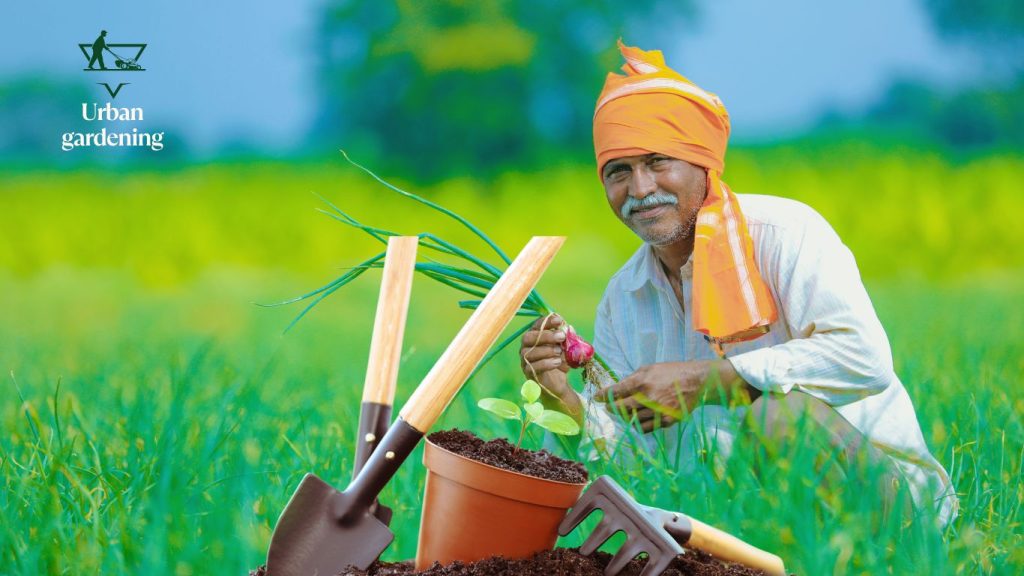How to Start Urban Farming at Home?

How to Start Urban Farming at Home?
Urban farming has become more than just a trend; it’s a growing movement around the world. With increasing concern over food security, sustainability, and the environment, many people are turning to urban farming as a way to grow their own fresh produce, reduce their carbon footprint, and even save money on groceries. But how can you start urban farming at home? Whether you have a small balcony, a rooftop, or just a sunny windowsill, it’s possible to cultivate a variety of fruits, vegetables, and herbs in an urban environment. Here’s a detailed guide to get you started on your urban farming journey.
What is Urban Farming?
Urban farming refers to the practice of cultivating, processing, and distributing food in or around urban areas. Unlike traditional farming, which typically takes place in rural settings with large expanses of land, urban farming happens within cities and densely populated areas. Urban farming can be as small as a few potted plants or as large as a community garden or rooftop farm.
The appeal of urban farming lies in its accessibility. No matter where you live, you can start growing your own food with a few simple tools, some knowledge, and a little bit of creativity. With urban farming, you can enjoy the benefits of fresh, organic produce, even if you live in the heart of a busy city.

Benefits of Urban Farming
Before diving into the “how,” let’s take a moment to explore the benefits of urban farming. Urban farming offers multiple advantages, both for individuals and the community at large:
- Fresh, Organic Produce: Growing your own food means you control what goes into it. You can avoid harmful pesticides and fertilizers, ensuring your food is as healthy as possible.
- Reduced Carbon Footprint: By growing food locally, urban farming reduces the need for transportation and packaging, contributing to a lower environmental impact.
- Enhanced Food Security: Having your own food source can be a step toward greater food security, especially in uncertain times.
- Mental and Physical Health Benefits: Gardening has been shown to reduce stress, improve mood, and promote physical activity.
- Community Building: Many urban farming initiatives bring people together, whether through community gardens or local food-sharing programs.
Getting Started with Urban Farming
Now that you’re familiar with what urban farming is and why it’s beneficial, let’s move on to the practical steps of starting your own urban farm at home.
Step 1: Assess Your Space
The first step to starting an urban farm is to assess the space you have available. Urban farming can be done in almost any space, whether it’s a balcony, rooftop, backyard, or even inside your home. Here are some options to consider:
- Balcony or Patio: If you have a small balcony or patio, you can use containers or raised beds to grow your plants.
- Rooftop: If you have access to a rooftop, this can be a great place to start a larger-scale urban farm.
- Windowsill: Even a sunny windowsill can be used to grow herbs and small plants.
- Indoor Spaces: With the help of grow lights, you can turn any indoor space into a productive farm.
Make sure to consider how much sunlight your space gets. Most vegetables need at least six hours of sunlight per day, so choose a spot that gets plenty of natural light or invest in artificial lighting if necessary.

Step 2: Choose Your Farming Method
Urban farming isn’t one-size-fits-all. There are various methods you can use, depending on your space, budget, and preferences. Here are a few popular urban farming techniques:
- Container Gardening: This method is perfect for small spaces like balconies or patios. You can grow plants in pots, buckets, or any other container you have. It’s an easy way to start urban farming without needing a lot of land.
- Vertical Gardening: If you’re short on space, vertical gardening is a great solution. You can grow plants upward using shelves, wall-mounted planters, or trellises. This method maximizes space and allows you to grow more plants in a limited area.
- Hydroponics: Hydroponics involves growing plants without soil, using a nutrient-rich water solution. This method is great for indoor spaces or areas with limited soil availability. Hydroponic systems can be simple or complex, depending on your needs and resources.
- Aquaponics: Similar to hydroponics, aquaponics combines plant cultivation with fish farming. The fish provide nutrients for the plants, while the plants help filter the water for the fish.
- Aeroponics: This soil-less method uses a mist to deliver nutrients to plant roots. Like hydroponics and aquaponics, aeroponics is a space-efficient method that works well in urban settings.
Step 3: Plan Your Crops
Once you’ve chosen your farming method, it’s time to decide what you want to grow. The possibilities are nearly endless, but here are some popular crops for urban farming:
- Herbs: Herbs like basil, mint, parsley, and cilantro are easy to grow and don’t take up much space.
- Leafy Greens: Lettuce, spinach, kale, and arugula are perfect for urban farming. They grow quickly and don’t require a lot of space.
- Root Vegetables: Potatoes, carrots, beets, and radishes can be grown in containers or raised beds.
- Fruits: Strawberries, blueberries, and even dwarf fruit trees can thrive in urban environments.
- Tomatoes and Peppers: These plants can be grown in containers or vertical gardens, making them ideal for small spaces.
Consider your local climate and growing season when planning your crops. If you live in a cooler climate, you may need to start your plants indoors or use grow lights to extend the growing season.
Step 4: Gather Your Materials
Next, gather the materials you’ll need for your urban farm. Here’s a basic list of supplies to get you started:
- Containers or pots
- Soil or potting mix
- Seeds or seedlings
- Fertilizer or compost
- Watering can or drip irrigation system
- Gardening tools (trowel, gloves, pruners)
If you’re using a hydroponic or aquaponic system, you’ll also need additional equipment like water pumps, grow lights and nutrient solutions.
Step 5: Plant and Maintain Your Urban Farm
Now comes the fun part—planting your crops! Follow the instructions on your seed packets or seedlings to ensure proper spacing and planting depth. Water your plants regularly, but be careful not to overwater, especially in containers. Too much water can lead to root rot.
Monitor your plants for signs of pests or disease, and address any issues promptly. Regular maintenance, such as pruning, weeding, and fertilizing, is key to a successful urban farm.
Common FAQs About Urban Farming
Can I grow enough food to feed my family?
While it’s unlikely that a small urban farm will provide all the food needed for a family, it can certainly supplement your groceries with fresh produce. Larger spaces or more advanced systems like hydroponics can increase your yield.
What are the costs associated with urban farming?
The costs of urban farming can vary depending on the method you choose. Container gardening is inexpensive, while hydroponics or aquaponics systems can be more costly upfront. However, the long-term savings on grocery bills can make it worthwhile.
Is urban farming environmentally friendly?
Yes! Urban farming reduces the need for long-distance transportation of food, which cuts down on greenhouse gas emissions. It also encourages biodiversity and reduces food waste.
How much time does urban farming take?
The time commitment depends on the scale of your farm and the crops you’re growing. Daily watering and occasional maintenance are usually required, but urban farming can be as low-maintenance or as involved as you’d like it to be.

Questions and Answers
Q: What is the best urban farming method for small spaces? A: For small spaces like balconies or patios, container gardening or vertical gardening are the best options. These methods allow you to grow plants in confined areas without taking up too much space.
Q: Do I need special equipment to start urban farming indoors? A: If you don’t have enough natural sunlight, you’ll need grow lights to help your plants thrive indoors. Hydroponic systems may also require additional equipment, such as water pumps and nutrient solutions.
Q: Can I grow plants year-round in an urban farm? A: Yes, if you’re using indoor systems like hydroponics or grow lights, you can grow plants year-round. For outdoor setups, the growing season will depend on your local climate.
Q: How can I prevent pests in my urban farm? A: Regularly inspecting your plants, using natural pest repellents, and ensuring proper air circulation can help prevent pests. Companion planting (growing certain plants together) can also deter harmful insects.
Urban farming offers a rewarding way to grow your own food, improve your health, and contribute to a more sustainable future. Whether you have a tiny balcony or access to a rooftop, urban farming can help you take control of your food and reduce your environmental impact. Happy farming!

2 Comments